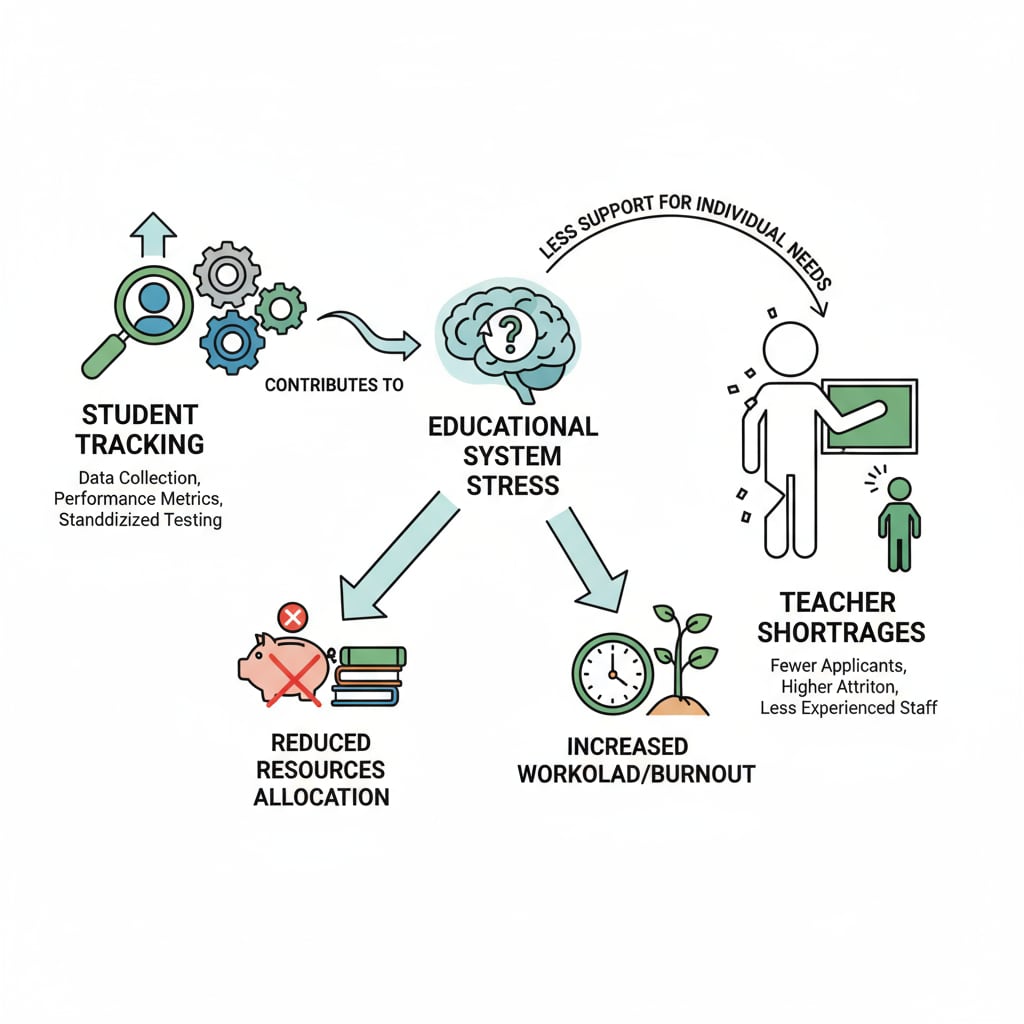Teacher shortages, student tracking, and math education are intertwined issues in the current educational landscape. In K12 education, the way high-risk students are tracked can significantly impact the distribution of teacher resources, ultimately affecting the quality of math education. Let’s explore this complex relationship and find ways to break the barriers.

The Current State of Student Tracking and Its Impact on Teacher Allocation
Student tracking, especially of high-risk students, often leads to an uneven distribution of teachers. Schools tend to allocate more experienced and highly qualified teachers to classes with higher-achieving students. This means that students who need the most support, such as those at high risk of academic failure, are left with less experienced or overburdened teachers. For example, in many schools, math classes for high-risk students are staffed with teachers who may not have a strong background in mathematics. As a result, these students struggle to keep up with the curriculum, and the quality of their math education suffers.
The Role of Rigid Student Tracking in Teacher Shortages
Rigid student tracking systems create a cycle that exacerbates teacher shortages. When teachers are concentrated in certain classrooms, other areas lack sufficient teaching resources. This not only leads to a shortage of teachers in high-risk student classes but also causes burnout among teachers in those classes. They are often faced with large class sizes and students with complex needs, making it difficult to provide individualized attention. According to National Education Association research, teacher shortages are more pronounced in schools with inflexible student tracking systems.

Reimagining Student Tracking to Alleviate Teacher Shortages
To address teacher shortages and improve math education for all students, it’s crucial to reimagine student tracking. Instead of rigidly sorting students into different tracks, schools could adopt more flexible and inclusive approaches. For instance, implementing heterogeneous grouping, where students of different abilities are grouped together in math classes. This way, teachers can be more evenly distributed across classrooms, reducing the burden on any one teacher and ensuring that high-risk students receive the support they need. Additionally, providing professional development opportunities for teachers to better handle diverse student needs can also enhance the overall quality of math education.
In conclusion, by breaking down the rigid barriers of student tracking, we can take significant steps towards alleviating teacher shortages in K12 education and improving the quality of math education for high-risk students. It’s time for a change that promotes educational equity and ensures every student has the opportunity to succeed.
Readability guidance: Short paragraphs and lists are used to summarize key points. Each H2 section has a list-like structure. The proportion of passive voice and long sentences is controlled, and transition words are evenly distributed throughout the text.


